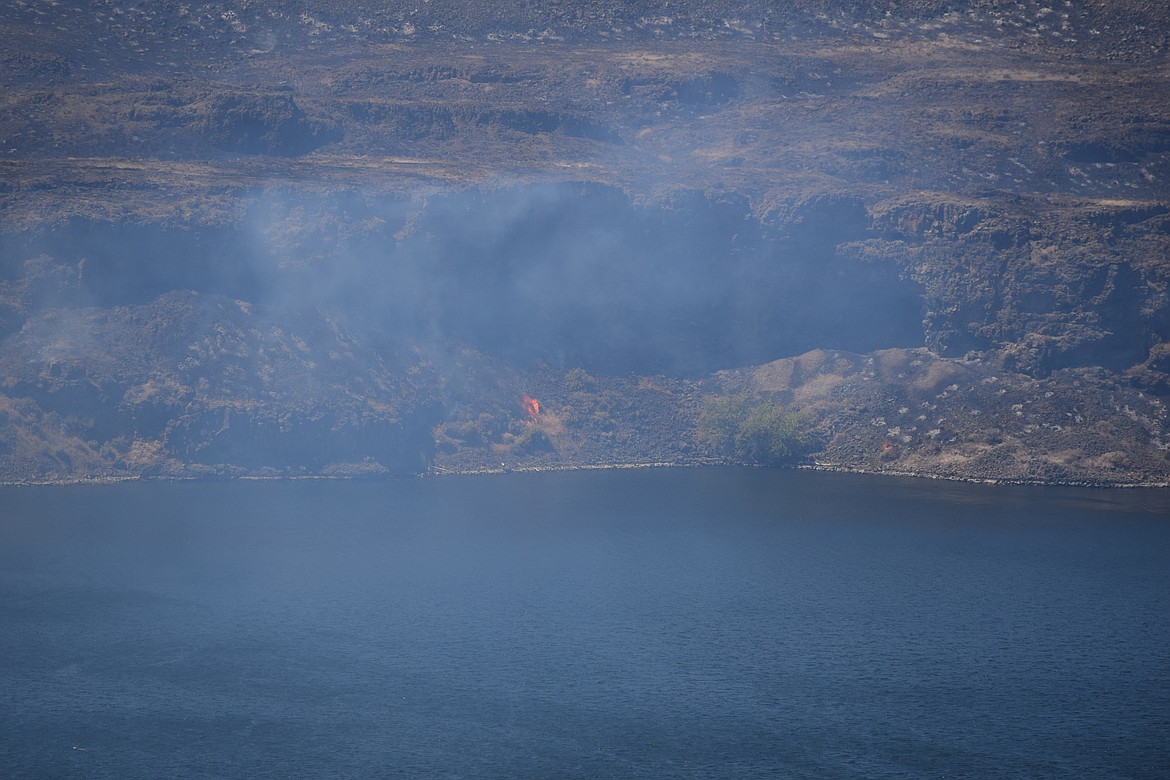Insurance and wildfires
MOSES LAKE — A lot of things can damage a home, but according to insurance agent Steve Crapson, fire is different.
“You can save a lot of stuff from water, but you can’t save stuff from fire,” Crapson said. “Once it's burnt. It's gone forever. Those memories, those are the part of the cost that you can't recoup ever. Pictures, sentimental quilts, those kinds of things. They never can be redone.”
Crapson, an exclusive agent for Allstate Insurance, said it’s better for homeowners, especially those living in the countryside, at the edge of towns, and in high-risk areas far from a rapid fire department response, to approach fire risk more with prevention rather than recovery in mind.
In 2021, wildfires consumed more than 1.9 million acres in Washington, Oregon and Idaho, according to a press release from the Northwest Insurance Council. Even with 2022’s cooler and wetter spring, this year’s fire season is already upon us.
Citing recent wildfires near Lind and the ongoing Vantage Highway fire, the council in its press release advised everyone living in the wildland-urban interface — where wildfires do much of the damage done to homes and buildings — have an evacuation plan and review their insurance coverage.
The good news, the press release stated, is that damage and loss from fire — including wildfires — is covered under standard homeowner, renters and business insurance.
The bad news, Crapson noted, is that everyone needs to make sure their policy is adequate to cover reconstruction costs and rates could be higher, especially if you are in a high-risk area.
“Look at your policy and at your rebuilding cost,” he said. “Get that updated to cover at least 80% of the rebuild cost.”
Crapson said he found, in an informal survey of builders, that a typical home costs about $200-per-square-foot to build right now. He told of working with a customer who had a lower quote from another insurance company who then discovered the policy did not adequately provide for rebuilding his existing home.
“Make sure you’re comparing apples to apples,” he said.
Distance from a fire station also matters, Crapson said. Some insurance companies charging higher rates for homes 10 or more miles away from a fire station, while others put that high-risk cutoff at 25 miles. In one case, Crapson said, the difference was $4,000 per year for one homeowner.
There are also ways to landscape and build that can limit fire damage, Crapson said. Homes can be built with metal roofing material, cement board siding and even metal siding. If possible, window sashes made of something other than wood to limit risk to the house itself should be used, Crapson said. The insurance companies he represents advise policyholders to follow the Washington State Department of Natural Resources' Firewise Guidelines (www.dnr.wa.gov/firewise), which advise homeowners to create a 100-foot defensible buffer around their homes, keep rubbish, leaves and weeds clear, grass mowed and trees spaced 15 feet apart.
In fact, Crapson said, the companies he represents will make home inspections as part of the policy writing and maintenance process to see what steps a homeowner can take to lessen the risk of fire damage.
“When we start a policy, we have home inspections,” he said. “About every 10 years a home gets reinspected.”
Crapson said most insurance companies will advise the homeowner when they see a potential hazard and suggest steps to mitigate risks. That not only helps the insurance company save money, but helps the insured as well.
“Fire hazard gets called out because it's the second biggest claim that we have in this area next to wind,” he said.
Charles H. Featherstone can be reached at cfeatherstone@columbiabasinherald.com.







